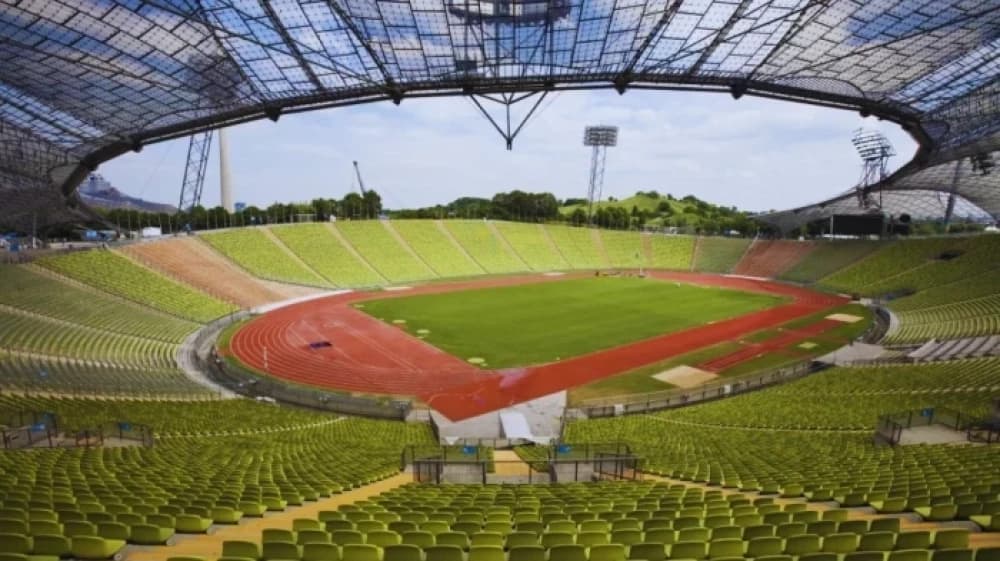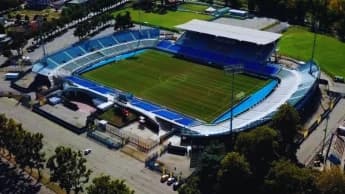
Where History, Innovation, and Passion Collide
The Olympiastadion Munich, nestled in the vibrant heart of Bavaria’s capital, stands as a breathtaking testament to sporting excellence and architectural ingenuity. Built for the 1972 Summer Olympics, this iconic stadium has since evolved into a revered landmark, hosting legendary sporting events, electrifying concerts, and unforgettable cultural spectacles. With its groundbreaking design, rich history, and unparalleled atmosphere, the Olympiastadion remains one of the world’s most celebrated sports venues.
History and Construction: A Vision of Modernity
The Olympiastadion’s story begins in the late 1960s, when Munich was selected to host the 1972 Summer Olympics. The city, eager to showcase its post-war resurgence, envisioned a stadium that would symbolize progress, innovation, and unity. The project was entrusted to renowned architect Günter Behnisch, whose avant-garde design broke new ground in stadium architecture.
Construction commenced in 1968, transforming a former military training ground into a futuristic sports complex. The stadium’s most striking feature—its undulating, translucent acrylic glass roof—was a marvel of engineering, supported by a web of steel cables. This tensile architecture was revolutionary, allowing natural light to flood the arena while shielding spectators from the elements.
Completed in time for the Olympics, the stadium made its grand debut on August 26, 1972, hosting the opening ceremony and numerous athletic events. The Games were a defining moment for Germany, symbolizing peace and international cooperation, though they were tragically marred by the Munich massacre. Despite this, the Olympiastadion emerged as a beacon of resilience and hope.
Architectural Marvel: A Fusion of Form and Function
The Olympiastadion’s sleek, organic design was a radical departure from traditional stadiums. Key features include:
-
The Iconic Roof: The sweeping, transparent canopy was the first of its kind, creating an open-air feel while maintaining structural integrity.
-
Seating Bowl: Designed for optimal visibility, the 69,000-capacity stadium ensures an intimate connection between fans and the action.
-
Integration with Nature: Set within Munich’s sprawling Olympic Park, the stadium harmonizes with lush greenery, lakes, and the towering Olympic Tower.
The venue’s innovative use of materials and space influenced stadium design worldwide, setting a new standard for modern sports architecture.
A Legendary Sporting Arena
The Olympiastadion quickly became a hallowed ground for football. It served as the home of FC Bayern Munich and TSV 1860 Munich, witnessing countless historic moments:
-
1974 FIFA World Cup Final: West Germany’s dramatic 2-1 victory over the Netherlands cemented the stadium’s place in football lore.
-
Bayern Munich’s Golden Era: The club’s dominance in the Bundesliga, DFB-Pokal, and European competitions unfolded here, including their 2001 UEFA Champions League triumph.
-
International Matches: Hosting UEFA Champions League finals, European Championships, and World Cup qualifiers, the stadium remains a top-tier football destination.
Beyond football, the Olympiastadion has welcomed athletics, rugby, and American football, proving its versatility as a world-class venue.
Concerts and Cultural Landmarks
The stadium’s exceptional acoustics and grand scale have made it a premier concert venue. Legendary artists who have graced its stage include:
-
Michael Jackson (1988, 1997)
-
The Rolling Stones (multiple tours)
-
U2 (2005, 2010)
-
Pink Floyd (1994)
These events have drawn hundreds of thousands of fans, reinforcing the Olympiastadion’s status as a cultural epicenter.
Olympic Park: A Legacy Beyond Sports
Surrounding the stadium, the Olympic Park offers a scenic retreat with:
-
Olympic Tower: Providing panoramic views of Munich and the Bavarian Alps.
-
Swimming Hall and Ice Rink: Hosting elite competitions and public events.
-
Green Spaces and Lakes: A favorite spot for joggers, cyclists, and families.
The park remains a vibrant hub for recreation and major events, ensuring the Olympic legacy endures.
Modern Relevance and Future
Though Bayern Munich moved to the Allianz Arena in 2005, the Olympiastadion continues to thrive. It remains a sought-after venue for:
-
International football matches
-
Large-scale concerts and festivals
-
Cultural and corporate events
Renovations over the years have kept the stadium state-of-the-art, ensuring it meets modern standards while preserving its historic charm.
Conclusion: A Timeless Icon
The Olympiastadion Munich is more than just a stadium—it is a symbol of innovation, passion, and history. From its groundbreaking architecture to its legendary sporting moments and unforgettable concerts, it has left an indelible mark on the world.
Whether you’re a football fanatic, music lover, or architecture enthusiast, the Olympiastadion offers an experience like no other. Its legacy as a monument of sporting and cultural greatness ensures it will continue to inspire generations to come.





